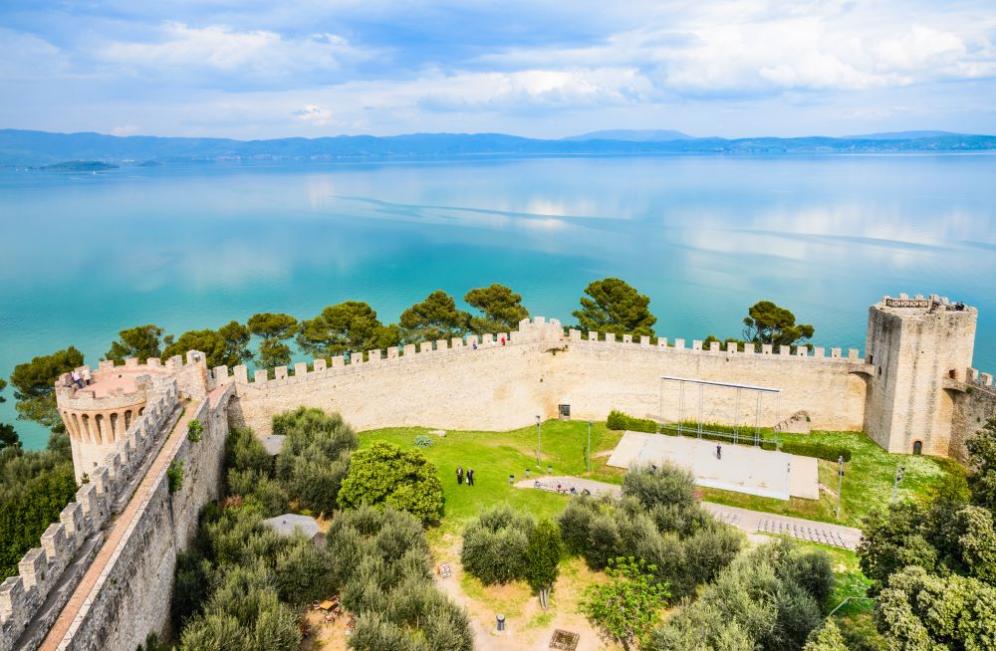


My flat in the lower part of Casiglione del Lago looks onto Lake Trasimeno near the port.

The town owes its name to the symbol that stands out in the coat of arms of the family that once dominated it; the name Castiglione, in fact, derives from the Latin Castellum Leonis (castle of the lion), which was then popularized in Castellioni.

Castiglione del Lago is located along what was once an important communication route, squeezed between Orvieto to the south, Chiusi to the west and Arezzo to the north. Its position in such a disputed area, first between the Etruscans and the Romans, then between the Tuscan towns and Perugia, caused the destruction of the original fortifications on numerous occasions, rebuilt several times. Founded by the Romans with the name of Novum Clusium (Nuova Chiusi), it stands on a hill that in ancient times was the fourth island of Lake Trasimeno (the three islands still existing are Maggiore, Minore and Polvese) before the strip of water that separated it from the mainland was filled. In the urban structure of the ancient village it is easy to see, in the three parallel streets that cut longitudinally the town (decumani), the Roman origin.

Only during the reign of Frederick II (at the beginning of the 13th century), Castiglione experienced a period of relative stability.

Later the town fell under the control of Perugia, becoming a fief of the powerful Baglioni family. In 1550, Pope Julius III granted the fiefdom to his sister Giacoma Ciocchi del Monte. On November 19, 1563, her son, Ascanio della Corgna, became Marquis of Castiglione and Chiugi at the behest of Pius IV, together with his brother Cardinal Fulvio. In 1617 Paul IV granted the ducal title to Fulvio II. Ascanio I was succeeded by Diomedes, Ascanio II and Fulvio II, in whose service the burlesque poet Cesare Caporali and the severe court secretary, as well as political writer, Scipione Tolomei worked. Duke Fulvio II died in 1647 without leaving heirs and so the fiefdom returned under the dominion of the State of the Church.

The marquisate had an area of approx. 200 km² and importance as a "buffer zone" between the Grand Duchy of Tuscany and the papal territories. It was a papal fief with the power of an empire and the right to mint coins. Ascanio della Corgna issued the statutes in February 1571, later completed by Cardinal Fulvio and his nephew Diomede: they constituted a large collection of civil and criminal juridical norms to regulate what happened in the statelet. The marquisate was also renowned for cultural and artistic events: in the Castiglionese palace the marquis organized meetings of the Accademia degli Insensati, with the participation of distinguished writers, nobles and artists; Pomarancio and other painters frescoed the prestigious residence, designed by Vignola and Galeazzo Alessi.

Casiglione del Lago
Address: Piazza Gramsci, 1, 06061
Phone: 075 96581
Site:
http://www.comune.castiglione-del-lago.pg.it/Location inserted by
Priscilla Worsley